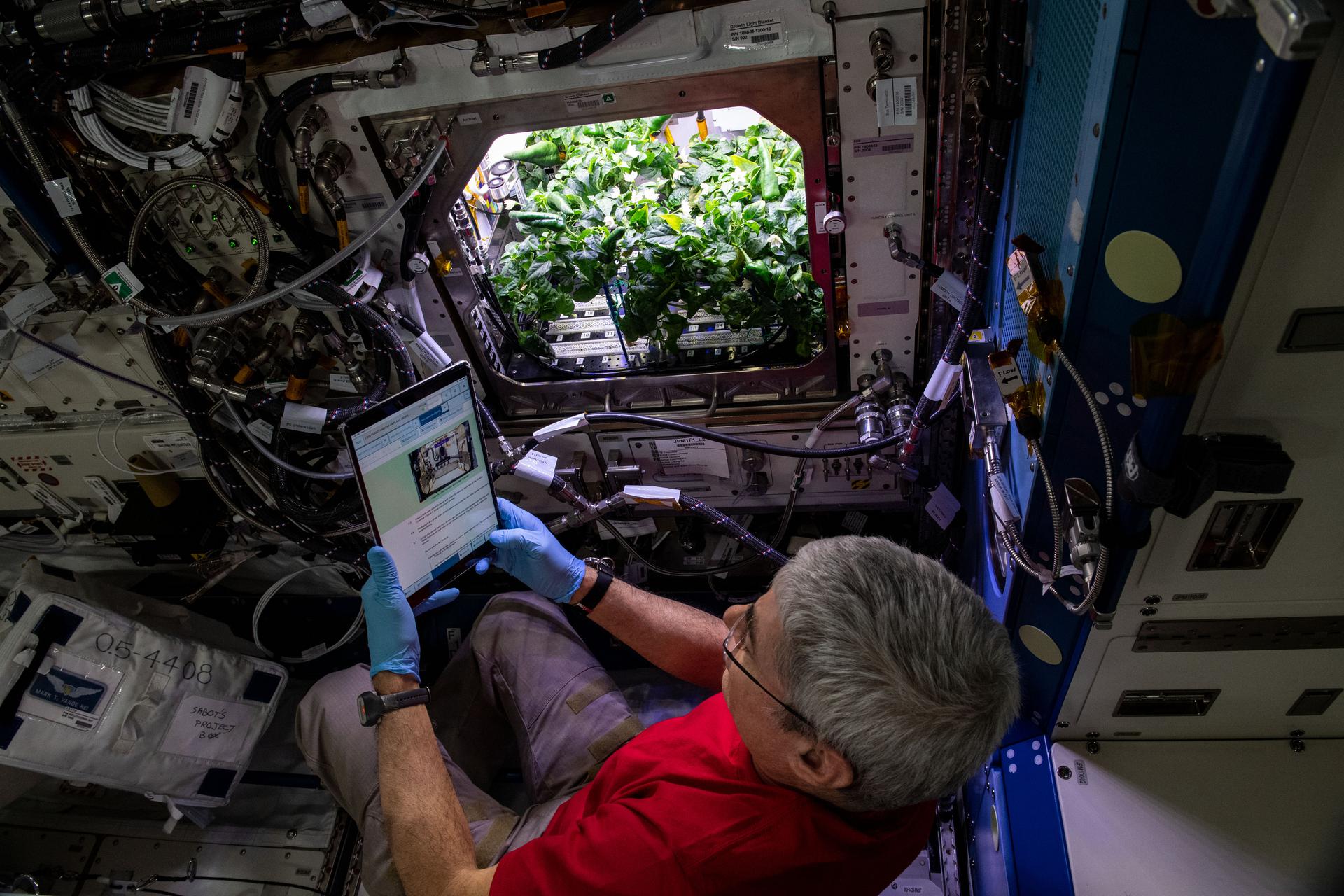New research uncovers the connection between space agriculture and astronaut health. A study published in npj Microgravity shows how analyzing diverse datasets together can reveal insights that might otherwise be missed — in this case, linking space-grown food quality to astronaut nutrition and gut health.
The paper reviewed previous studies of plants grown aboard the International Space Station. The authors found that some edible plants grown in low Earth orbit have lower concentrations of essential nutrients, like calcium and magnesium, than those grown on Earth.
The reduced levels of these nutrients could make crops not as effective in mitigating the bone loss and reduced immune function that astronauts encounter in space.
Working Groups Uncover Hidden Health Connections
Three Analysis Working Groups from NASA’s Open Science Data Repository collaborated to make this paper possible. These discipline-specific groups typically work independently, but this project sparked conversations among researchers with different specialties.
Researchers combined plant data, crop nutrition profiles, gut studies, and astronaut blood biomarkers — a data integration effort of the Biological and Physical Sciences Division open science model. The work also draws on data from JAXA (Japan Aerospace Exploration Agency).
For NASA, these findings offer new insights into how to feed and support astronauts in space, particularly on long-duration missions to the Moon and Mars.
Seeks Ways to Improve Space Diets
The study also examined increased intestinal permeability — often called “leaky gut” — a condition that can result from poor nutrition and may be exacerbated by the space environment. Intestinal permeability may interfere with how astronauts absorb nutrients and regulate immune responses.
If properly engineered, space-grown crops could offer a solution to these health challenges. The team outlined several potential strategies, including bioengineering plants with higher nutrient content, incorporating more antioxidant-rich species, and designing personalized nutrition plans using astronauts’ genetic information.
The study suggests targeting specific biological pathways, such as using compounds like quercetin, an antioxidant found in certain crops, to address bone health challenges at the molecular level. The approach emphasizes designing nutrition plans based on individual astronaut physiology, including how well their digestive systems can absorb nutrients.
Related Resources
Open Science Data Repository Analysis Working Groups (AWG)
About BPS
NASA’s Biological and Physical Sciences Division pioneers scientific discovery and enables exploration by using space environments to conduct investigations not possible on Earth. Studying biological and physical phenomenon under extreme conditions allows researchers to advance the fundamental scientific knowledge required to go farther and stay longer in space, while also benefitting life on Earth.
